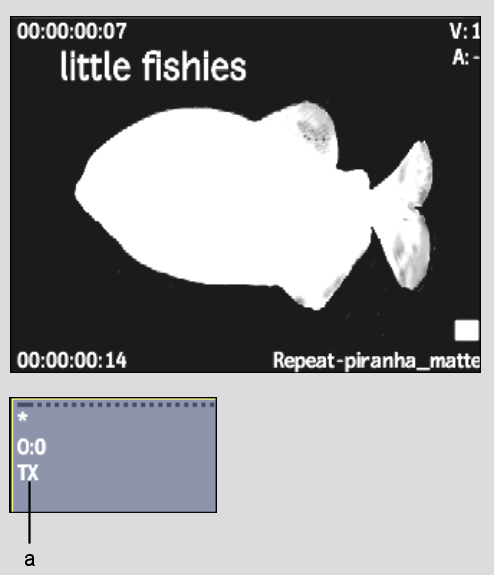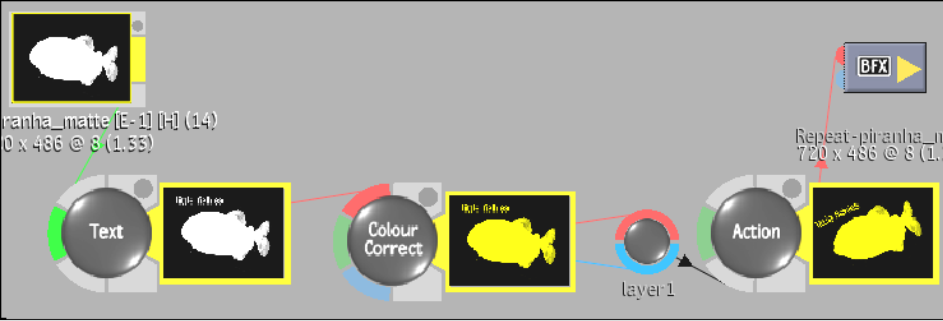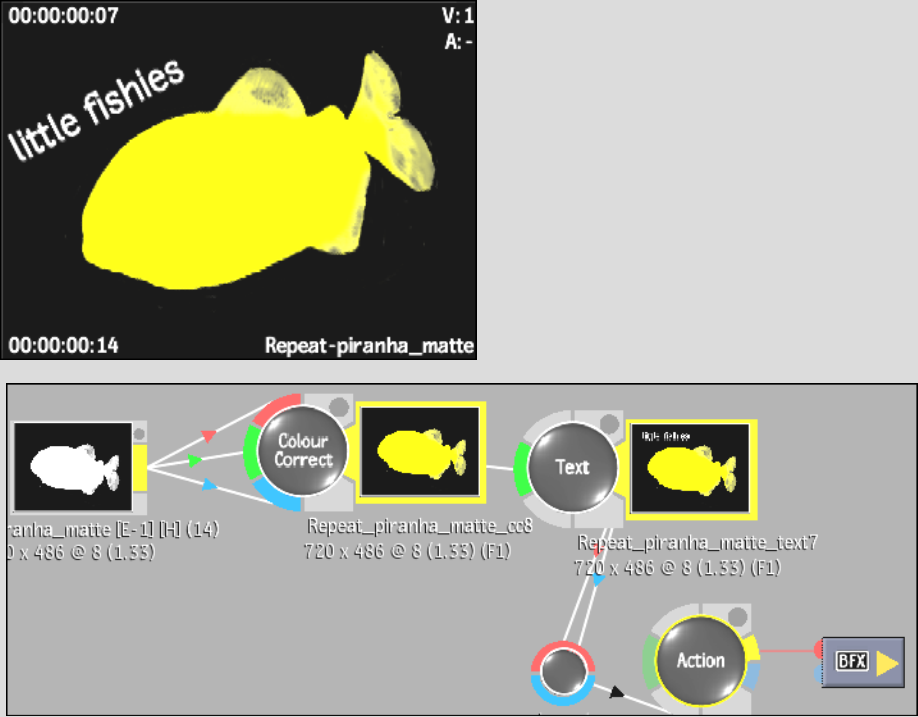Soft effects have a fixed pipeline. Regardless of the order in which you create them, they are always processed in the same order, from Text to Axis:
If you add both a Text and CC soft effect to the timeline, the soft Text is always affected by the soft CC regardless of the order in which they are added to the pipeline. An Axis soft effect is always processed last so it is not affected by other soft effects in the pipeline. This is illustrated in the following example.
First a Text soft effect is added to a segment.



(a) Text soft effect indicator
Image courtesy of Technicolor (formerly Toybox)
Next a CC and Axis soft effect are added. The indicators are added to the timeline in the order in which the soft effects are processed. Because the soft Text is processed first, it is affected by both the soft CC and the soft Axis.



(a) Soft effect indicators listed in processing order
Image courtesy of Technicolor (formerly Toybox)
If you enter a BFX level and extract the soft effects, they are converted to nodes in the following order to maintain the same visual result.



Because the BFX pipeline is not fixed, you have the flexibility of reordering nodes. In the following example, the Text and CC nodes are reordered. Because the CC node is processed first in the pipeline, the Text node is not affected by the CC node. For more information, see Batch FX.



Image courtesy of Technicolor (formerly Toybox)